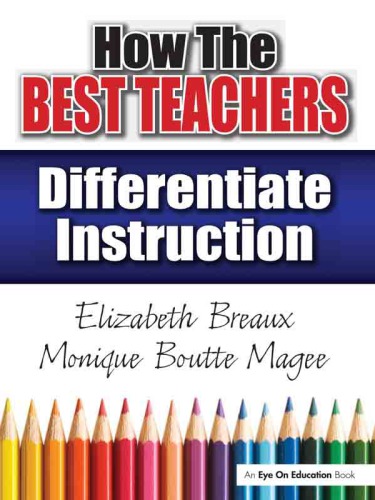

Most ebook files are in PDF format, so you can easily read them using various software such as Foxit Reader or directly on the Google Chrome browser.
Some ebook files are released by publishers in other formats such as .awz, .mobi, .epub, .fb2, etc. You may need to install specific software to read these formats on mobile/PC, such as Calibre.
Please read the tutorial at this link. https://ebooknice.com/page/post?id=faq
We offer FREE conversion to the popular formats you request; however, this may take some time. Therefore, right after payment, please email us, and we will try to provide the service as quickly as possible.
For some exceptional file formats or broken links (if any), please refrain from opening any disputes. Instead, email us first, and we will try to assist within a maximum of 6 hours.
EbookNice Team

Status:
Available0.0
0 reviews
ISBN 10: 1315855259
ISBN 13: 9781315855257
Author: Monique Magee
This accessible and practical guide shows teachers how to provide their students with a variety of ways to strengthen their understanding of new material. A selection of assessments is also available to ensure that students have mastered classroom content, regardless of their individual learning styles, abilities, and needs. Contents include: What is differentiated instruction and why do we differentiate? Know your students Management for differentiated instruction 12 ways to differentiate And more!
Chapter 1: What is Differentiated Instruction, and Why Do We Differentiate?
Jencie Marie
Andrew Joseph
Selina
Differentiated Instruction Methods, Strategies, and Assessments
Example 1:
Example 2:
Chapter 2: Know Your Students
Interest Inventory
Multiple Intelligences
Gardner's 7 Types of Intelligences
Figure 2.1 Logical-Mathematical Intelligence—”Number Smart”
Figure 2.2 Linguistic Intelligence—“Word Smart”
Figure 2.3 Musical Intelligence—”Sound Smart”
Figure 2.4 Spatial Intelligence—“Picture Smart”
Figure 2.5 Bodily-Kinesthetic Intelligence—”Body Smart”
Figure 2.6 Interpersonal Intelligence—”People Smart”
Figure 2.7 Intrapersonal Intelligence—”Self Smart”
Figure 2.8 Naturalist Intelligence—“Nature Smart”
Figure 2.9 Determine Your Multiple Intelligences
Fig. 2.10 Multiple Intelligences Profile
Fig. 2.11 Determine Your Multiple Intelligences
Fig. 2.12 Multiple Intelligences Profile
Learning Styles
Fig. 2.14 Learning Styles Inventory
Chapter 3: Management for Differentiated Instruction Two Critical Steps
Organization and Classroom Management
How to Teach It
How to Practice It
How to Implement It
Planning for Differentiated Instruction
Chapter 4: Twelve Ways to Differentiate
1 Cooperative Grouping
What Is It? What Is It?
Classroom Scenario
The Differentiated Way
Planning
Implementation
Variations
The Bottom Line
Figure 4.2 Tasks
2 Jigsaw Puzzles
What Are They?
Classroom Scenario
The Differentiated Way
Planning
Implementation
Variations
The Bottom Line
3 Centers
What Are They?
Classroom Scenario Classroom Scenario
The Differentiated Way
Planning
Implementation
Variations
The Bottom Line
Figure 4.4
Figure 4.5
Figure 4.6
Figure 4.7 Rules and Procedures for Centers on The War of 1812
4 Tiered Assignments
What Are They?
Classroom Scenario
The Differentiated Way
Planning
Implementation
Variations
The Bottom Line
5 Progressive Pockets
What Are They?
a Classroom Scenario
The Differentiated Way
Planning
Implementation
Variations
The Bottom Line
Figure 4.8 Completion Card
Figure 4.9 Directions Card for Pocket C, Activity Bag C–3
Figure 4.10
Figure 4.11
Figure 4.12
6 Curriculum Compacting
What Is It?
Classroo Scenario: Classroom Scenario
The Differentiated Way
Planning
Implementation
Variations
The Bottom Line
7 Anchoring Activities
What Are They?
Classroom Scenario
The Differentiated Way
Planning
Implementation
Variations
The Bottom Line
8 Varying Questioning
What Is It?
Classroom Scenario
The Differentiated Way
Planning
Implementation
Variations
The Bottom Line
9 Connect Four
What Is It?
Classroom Scenario
The Differentiated Way
Planning
Implementation
Variations
The Bottom Line
10 Raft
What Is It?
Classroom Scenario
The Differentiated Way
Planning
Implementation
Variations
The Bottom Line
Figure 4.20 RAFT Skeleton Letter
11 Learn-Like-Life Activities
What Are They?
Classroom Scenario
The Differentiated Way
Planning
Implementation
Variations
The Bottom Line
12 Team Teaching
What Is It?
Classroom Scenario
The Differentiated Way
Planning
Implementation
Variations
The Bottom Line
the difference a teacher makes
teaching teachers how to differentiate instruction
u are the best teacher
you're the best teacher in the world
the teacher teaches us well brainly
videos of how to be a teacher
teacher x teacher books
how to teach the difference between numbers and letters
Tags: Monique Magee, Teachers, Differentiate